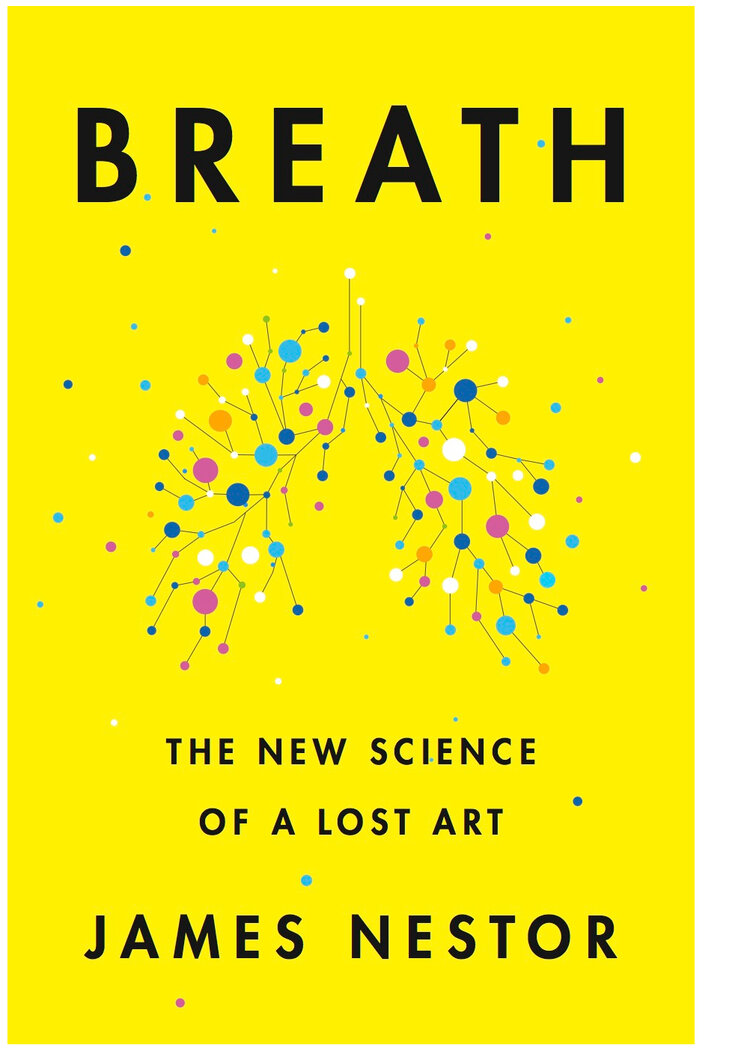1/ I didn’t realize how horrible mouthbreathing is for your daily health and longevity.
Turns out how you breathe has an impact on just about every part of your wellbeing, as I learned reading Breath: The New Science of a Lost Art by @MrJamesNestor
https://www.mrjamesnestor.com/breath ">https://www.mrjamesnestor.com/breath&qu...
Turns out how you breathe has an impact on just about every part of your wellbeing, as I learned reading Breath: The New Science of a Lost Art by @MrJamesNestor
https://www.mrjamesnestor.com/breath ">https://www.mrjamesnestor.com/breath&qu...
2/ Mouthbreathing leads to poor sleep, often to sleep apnea. It leaves you 40% more dehydrated. It makes you dumber with less air reaching your brain, reducing brain cell development. It’s less efficient with more dirty air in your body = smaller, more infection prone lungs.
3/ "the nose is the silent warrior: the gatekeeper of our bodies, pharmacist to our minds, and weather vane to our emotions.” - @MrJamesNestor
4/ Breathing through the nose is the gateway to controlling your autonomic nervous system. This is an automatic system you can actually control through how you breathe. It’s a key to how you can manage stress and anxiety.
5/ Left nostril breathing drives relaxation through your parasympathetic nervous system, lowering your body temperature & blood pressure. It shifts blood flow to the right side of your brain. It impacts creative thought, emotions, and formation of mental abstractions.
6/ Want more focus and energy? Breathe through your right nostril to stimulate your sympathetic nervous system, the “fight or flight” where your body goes into an elevated state of awareness. It sends blood to the side of the brain for logical decisions, language, and computing.
7/ The size of your lungs are directly tied to your life span. Smaller and less efficient lungs get sick and died over those with larger lungs.
Breathwork or moderate exercise like walking or cycling can boost lung size by 15%
Breathwork or moderate exercise like walking or cycling can boost lung size by 15%
8/ Breathe less. At a normal breathing rate, our lungs absorb only 25% of the oxygen & we breathe the rest out.
"The key to optimum breathing, and all the health, endurance, and longevity benefits that come with it, is to practice fewer inhales and exhales in a smaller volume.”
"The key to optimum breathing, and all the health, endurance, and longevity benefits that come with it, is to practice fewer inhales and exhales in a smaller volume.”
9/ "One of the first steps in healthy breathing is to extend these breaths, to move the diaphragm up and down a bit more, and to get air out of us before taking a new one in.” - @MrJamesNestor
10/ Chew. Our lack of chewing has led to smaller jaws which impacted the nasal pathways. Smaller nasal pathways led to more horrible mouthbreathing.
Turns out you can create new bones in your face by releasing stem cells through chewing. (Plus it can help you look younger:)
Turns out you can create new bones in your face by releasing stem cells through chewing. (Plus it can help you look younger:)
11/ One of the most surprising things I learned from reading Breath was how valuable carbon dioxide is to wellbeing.
Slower, longer exhales, result in higher carbon dioxide levels. This increases VO2 max, which can boost athletic stamina & also help us have a longer healthspan.
Slower, longer exhales, result in higher carbon dioxide levels. This increases VO2 max, which can boost athletic stamina & also help us have a longer healthspan.
12/ Chemoreceptors at the base of the brain stem use carbon dioxide to determine how fast and often we breath, not the amount of oxygen. At our earliest evolutionary state, our cells were dealing with a carbon dioxide rich environment on the planet.
13/ If you can train yourself to better manage your carbon dioxide levels and develop more flexible chemoreceptors, you can reduce anxiety.
How do you do this? Holding your breath on the exhale when your body is filled with carbon dioxide. Wim Hof method of breathwork can help.
How do you do this? Holding your breath on the exhale when your body is filled with carbon dioxide. Wim Hof method of breathwork can help.
14/ “The perfect breath is this: Breathe in for about 5.5 seconds, then exhale for 5.5 seconds. That’s 5.5 breaths a minute for a total of about 5.5 liters of air.” - @MrJamesNestor
15/ When a wave comes, it washes over you and runs up the beach. Then, the wave turns around, and recedes over you, going back to the ocean. . . . This is like the breath, which exhales, transitions, inhales, transitions, and then starts the process again. -Yoga Sutra 2.51

 Read on Twitter
Read on Twitter


